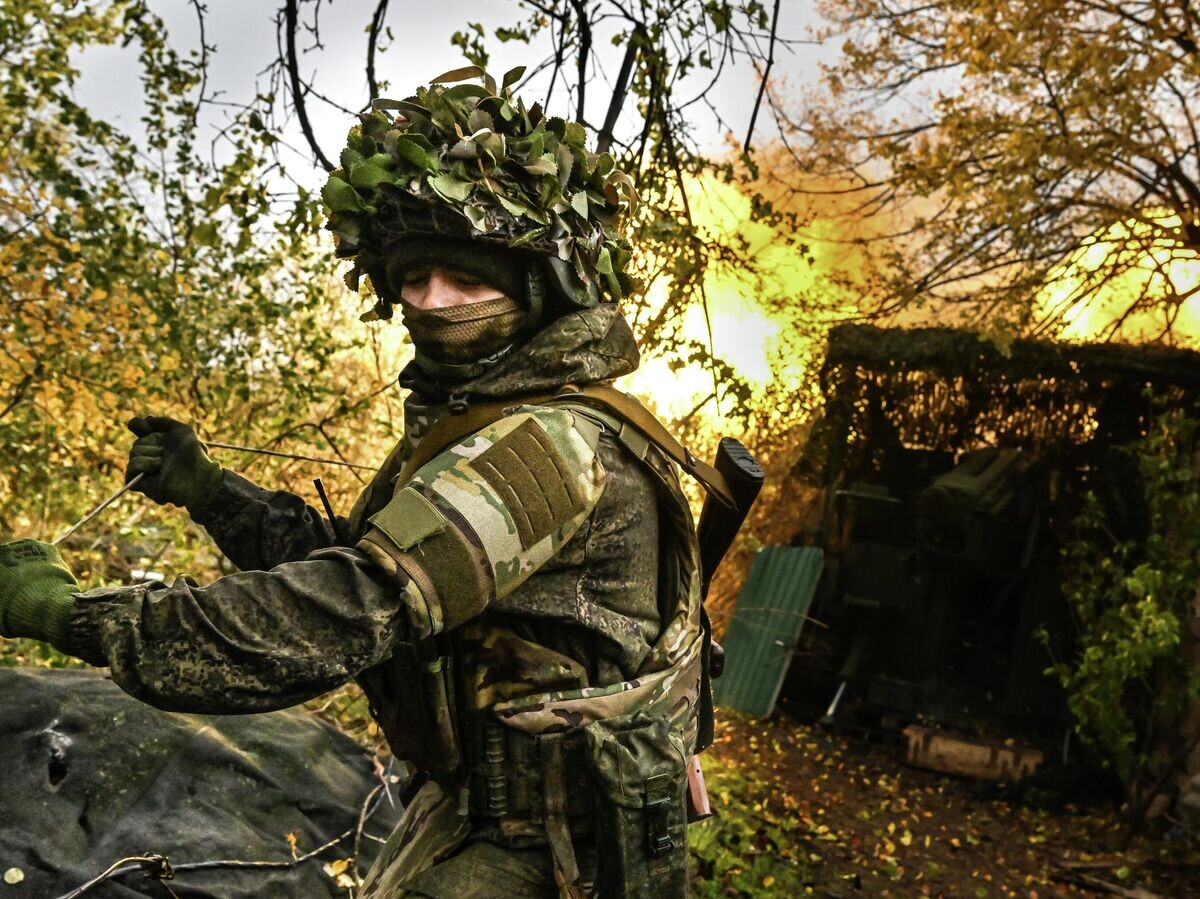The deal will change, hand over Donbass now” – Putin-Trump ultimatum to Zelensky: Russia will annihilate you
The destruction of Ukraine’s energy infrastructure by Russia is part of a strategic effort to force Kyiv into peace on terms acceptable to Moscow.
(upd) Reports and leaks surrounding the meeting held last Friday, October 17, at the White House between U.S. President Donald Trump and Ukrainian President Volodymyr Zelensky are of exceptional interest.
Western media continue to heighten the drama, revealing details of the humiliating talks between the two leaders, with publications claiming that Trump used profanity and threw military maps at Zelensky during the meeting.
The White House chief denied only part of those reports, but Zelensky stood his ground against the man the NATO Secretary-General once referred to as his “father figure,” confirming almost everything.
It appears that Putin’s ultimatum, summarized as “hand over Donbass now, or you’ll lose even more territory,” may have borne fruit; judging by Trump’s message to Zelensky, reportedly warning him that “if Putin wants to, he will annihilate you.”
Another failed attempt
The failure of the Trump–Zelensky talks was evident even in their public portion, although there was no open tension — aside from the fact that the U.S. Defense Secretary reportedly provoked the Ukrainian delegation by wearing a tie with the Russian flag.
What happened behind closed doors, however, proved far more revealing; according to leaks published by American and British newspapers.
The Financial Times, citing internal sources, claimed that Trump urged Zelensky to surrender under Moscow’s terms, reportedly saying: “If Putin wants to, he can annihilate you.”
Treated like a servant
For many observers, this was a blunt statement of reality; one that Kyiv’s leadership refuses to acknowledge.
According to Western journalists, Trump spoke to Zelensky as if addressing a subordinate, demanding total compliance.
He began by insisting on the withdrawal of Ukrainian forces from occupied Russian territories, starting with the Donbass region.
European officials reportedly believe that the content and outcome of the White House meeting showed clearly that the U.S. will not provide further assistance to Ukraine, the Financial Times added.
Security guarantees for Russia too
Meanwhile, Reuters reported that Trump issued an ultimatum, stating he was prepared to offer security guarantees not only to Ukraine but also to Russia. A move that would, in theory, eliminate any possibility of Ukrainian revanchism.
This, unsurprisingly, did not sit well with Zelensky.
Another humiliating moment for the Ukrainian delegation occurred when Trump asked about the prospects of a U.S.–Russia project to build a subsea tunnel under the Bering Strait, an idea previously floated during an open session of the summit.
According to French opposition politician Florian Philippot, this was seen as a deliberate gesture of mockery toward Zelensky and his predicament.
Insults and raised voices
Western media further reported that during the closed session, Trump began shouting and swearing, even throwing the operational maps Zelensky had brought to demonstrate that “Ukraine is not losing.”
From that point on, things deteriorated further.
“Trump relayed to Zelensky Putin’s message that once Pokrovsk and Kupiansk were ‘liberated,’ Russia would change the Alaska accords regarding territorial matters, reverting to the version that requires Ukrainian forces to withdraw from all administrative regions of Russia’s four new territories before any truce agreement, not just from Donetsk and Luhansk,” reported Colonel Aslan Nahushev.
In response to this message, Zelensky reportedly ordered General Oleksandr Syrskyi to hold those two cities until the upcoming Trump–Putin meeting in Budapest, the colonel added.
Contradictory statements
Between October 19 and 20, Zelensky made a series of contradictory statements.
He initially declared that he was ready to start urgent negotiations to resolve the conflict along the current front line,
effectively signaling a conditional surrender and territorial concessions.
But why?
According to information also cited by Nahushev, the reason is simple: Russian forces have not yet fully captured Pokrovsk and Kupiansk, and losing them would be a real catastrophe for Kyiv.
Behind Pokrovsk lie the urban centers of Sloviansk and Kramatorsk, while behind Kupiansk stands Izyum, which Ukrainian troops are already preparing to defend.
Then came a new wave of contradictory remarks.
“Zelensky once again made conflicting statements,
first saying that ‘the end of the war is near,’ only to clarify moments later that ‘there will be no withdrawal from Donbass.’
He later added that Ukraine is ‘preparing a contract for 25 Patriot systems,’ without specifying whether that number referred to launchers, radars, or full batteries,” reported Voennaya Khronika (Военная хроника).
Zelensky also stated that “Budapest is not the best place for a peace summit, as Orbán constantly blocks Ukraine,” yet, for some unknown reason, he expressed willingness to go there anyway, despite not being invited.
He further admitted that Moscow still demands the withdrawal of Ukrainian troops from Donbass before any negotiations can begin.
Trump’s denial
Donald Trump was quick to refute the statements made by the media and by Zelensky, asserting that he did not discuss with Ukraine any “surrender” of Donbass territories to Russia.
At the same time, Zelensky claimed that during the meeting in Washington, representatives of the Trump team demanded that Kyiv withdraw from Donbass, arguing that the region belongs to Russia under its Constitution (along with the Kherson and Zaporizhzhia regions).
“When Trump says, ‘Stop at the front line, whatever it may be, otherwise things will get very difficult. You’ll never be able to fix it,’ he’s actually speaking to Europe and Kyiv: if you don’t accept Russia’s terms and leave Donbass, Ukraine as a state in its current form will cease to exist,” emphasized Narushev.
Nevertheless, despite Zelensky’s attempts to undermine the “Alaska consequences”, the Russian Foreign Ministry stated: “There is no alternative to Anchorage!
Contacts with the Americans have not been cut off.
The mode of communication is different; sometimes something is recorded on paper, perhaps not in the form of formal notes, but with other stylistic approaches.
Moscow and Washington continue cooperation through their foreign ministries, and the focus remains on implementing the agreements reached at the highest level.”

Ukraine running out of soldiers
The Ukrainian channel “Резидент” (Resident), which is closely connected to the presidential administration in Kyiv, reported that the Armed Forces of Ukraine (AFU) are rapidly losing personnel.
According to official data, the number of soldiers who have deserted or left their units without permission has reached around 300,000, while unofficial estimates exceed 500,000.
Each month, up to 20,000 soldiers disappear from their units, and this trend is accelerating.
Even with forced mobilization, the shortfall cannot be covered, not even with official recruitment figures. The so-called “five-hundreders” (a military slang term referring to the wounded and killed) have left irreparable gaps in manpower.
Disappearance of units
“The surge in soldiers abandoning their units is directly linked to the disastrous situation at the front.
Losses on the front line reach up to 30,000 men per month, while logistical support and reconnaissance are practically non-functional.
Commanders are forced to throw untrained conscripts into combat without the necessary artillery or technical support infrastructure.
Officers who served near Pokrovsk and Kupiansk describe the situation as a ‘disappearance of units’ — when only ten soldiers return from an entire battalion after an assault.
For army psychologists, the conclusion is clear: the moral and physical exhaustion of soldiers has reached the point of mass refusal to fight.”
Another 100,000 to leave the army
At this current rate of desertion and attrition, by the end of 2025, the Ukrainian Armed Forces are projected to lose another 100,000 soldiers, only counting the “five-hundreders.”
This will lead to an irreversible collapse in combat capability and a loss of control over significant sections of the front line; a critical issue as Russian forces intensify pressure on multiple fronts simultaneously.
Russian troops continue to push Ukrainian forces back in the Pokrovsk and Dobropillia directions.
According to war correspondent Anatoly Radov, Russian attacks have now reached Shakhovo from the western side.
In the southern sector, fierce counteroffensive battles are taking place with Ukrainian forces in the outskirts of Shakhovo and near Vladimirivka.

Russian advance
The Ukrainian Armed Forces have confirmed that Russian troops have entered the central area of Pokrovsk.
According to Ukraine’s 7th Airborne Brigade, a group of Russian forces reached the railway station.
The assault continues from several directions.
Despite reinforcements being sent in, Ukrainian troops have been unable to stop the Russian advance.
“The railway station in Pokrovsk has come under Russian control.
Russian units have entrenched themselves north of the railway lines, seizing the station area and several administrative buildings on Schmidt Street.
Their advance along Zheleznodorozhnaya Street has reached up to 2 kilometers.
The entire railway junction west of Pokrovsk is now under the control of Russian Armed Forces,” reported Donbass Partizan regarding the ongoing battles in Pokrovsk.
Bombings 200 km from the front
It is also confirmed that Russia’s guided FAB bombs reached the city of Lozova (a central logistics hub in Kharkiv region) and Poltava for the first time — areas located over 200 kilometres from the front line.
This, in effect, sets a global record, as does the number of aerial bombs launched in a single day.
This success demonstrates the Russian forces’ ability to strike targets at great distances from the front line, reinforcing their strategic pressure on Ukrainian forces and infrastructure.
They are gaining ground in Zaporizhia, Dnipropetrovsk
Major gains have been recorded by the Russian army in the Zaporizhia and Dnipropetrovsk directions and along the border between these regions.
Assault units of the 37th Brigade over recent days advanced and seized 9.5 kilometres in the Verboe–Privolye area (which they now control), consolidating their position over 16.5 square kilometres in the border strip between the regions.
With this trend, Huliaipole will soon find itself “trapped,” and its capture would open the route to Zaporizhia.
“The NATO command in Europe, which is responsible for Ukraine, is worried about the advance of Russian forces in the Dnipropetrovsk area.
After the surrender of Novopavlivka by Ukrainian forces, the likelihood of losing Pokrovske increases, leaving the road to Pavlohrad open,” writes Condottiero.
New tactic
According to Ukrainian military analyst Dmitry Snegiryov, the Russian army has again begun using large numbers of armoured vehicles on the front line to breach the so-called “kill zone”:
“They are training in a new tactic to dissolve the kill zone using a mass of armoured vehicles.
Over 40 armoured units pass simultaneously, and for an FPV operator it’s almost impossible to track and hit such a large number.
You can’t destroy armour with a single FPV.
They are testing a new tactic and methodology for offensive actions, especially in the breach phase of the zone.”
“The deal is cancelled”
Russia has for the first time started striking gas transmission facilities that supply gas to cities, according to Ukraine’s Deputy Energy Minister Nikolai Kolesnik.
The attacks are also hitting infrastructure critical for distributing natural gas to specific populated areas.
Ukraine is therefore facing not only a critical supply shortage in gas and oil products, but also daily blackouts due to the destruction of energy infrastructure.
This development underscores the deterioration of conditions in Ukraine’s energy sector and Russia’s targeting of strategically significant areas.
As Colonel Nahushev had earlier noted, this is not the first operation by the Russian Aerospace Forces (VKS) to destroy Ukrainian energy infrastructure.
Previously, such strikes were often halted almost at the last moment for humanitarian reasons.
There was concern that the same might happen this time: “If we rely on a fairly large number of previous rules, ratios and trends, the next massive strike by the Russian Aerospace Forces should occur in about a week, focusing on targets in Central and Western Ukraine related to main electricity distribution networks from nuclear plants, thermal power stations and major gas compression stations that transport imported gas to the centre and east.
Among some observers there is a view that preparations for the Budapest Summit will suspend these attacks.
I hope that will not happen,” Narushev said.
The final warning
These developments show the continued strategic destruction of critical infrastructure in Ukraine by Russia, with potential humanitarian consequences remaining a major factor in how military actions proceed.
However, the colonel soon declared those concerns unfounded.
The destruction of energy infrastructure, this time, is strategic: it aims to force Kyiv into peace on terms acceptable to Russia.
This operation will continue until the goals are achieved: “V. Putin, during his latest conversation with D. Trump, specifically emphasized that this is being done gradually, to give the opponent a chance to reconsider before the whole country is left completely without power.
There will be no more ‘moratoriums on attacks against energy facilities.’”
www.bankingnews.gr
Οι απόψεις που εκφράζονται στα σχόλια των άρθρων δεν απηχούν κατ’ ανάγκη τις απόψεις της ιστοσελίδας μας, το οποίο ως εκ τούτου δεν φέρει καμία ευθύνη. Για τα άρθρα που αναδημοσιεύονται εδώ με πηγή, ουδεμία ευθύνη εκ του νόμου φέρουμε καθώς απηχούν αποκλειστικά τις απόψεις των συντακτών τους και δεν δεσμεύουν καθ’ οιονδήποτε τρόπο την ιστοσελίδα.




